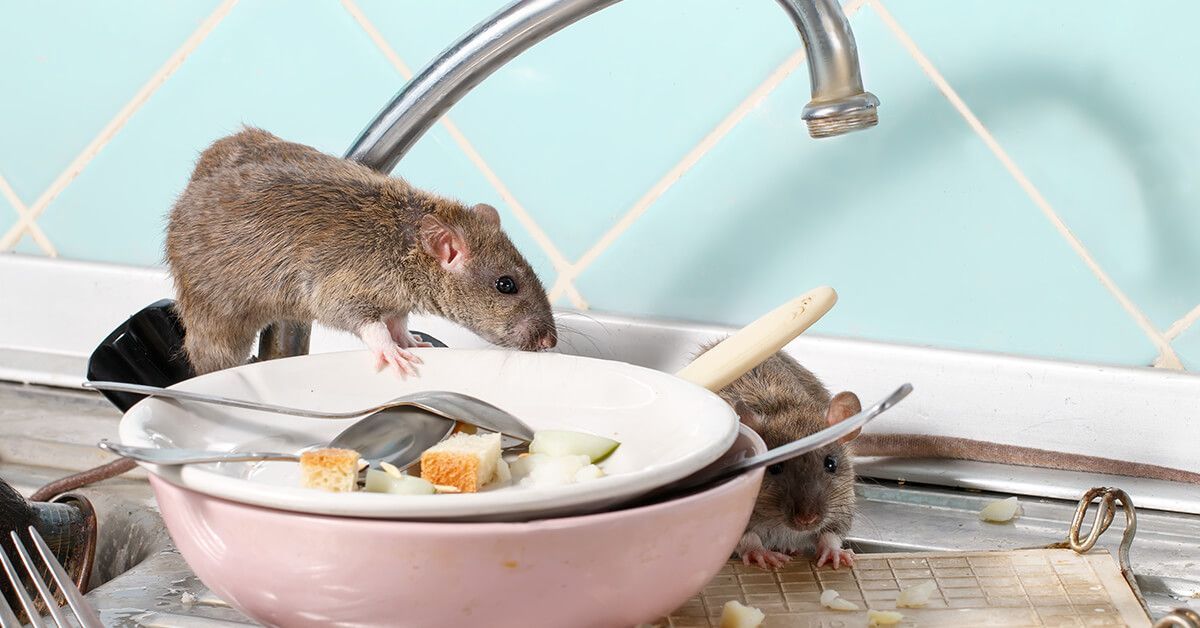If you’re reading this, chances are you’re dealing with a bedbug infestation or you want to learn more about how to prevent these pesky pests from taking up residence in your home. Either way, you’re in the right place.
In this article, you’ll learn how to identify and control bedbugs in your home and when traveling, as well as ways to handle an active bedbug infestation.
Bedbugs are small, wingless insects that feed on the blood of warm-blooded animals, including humans. They are about the size of an apple seed and typically vary in reddish-brown color; unfed adult bedbugs are mahogany in color, whereas fed adults are more red. Bedbug nymphs are young bedbugs that have not yet reached adulthood. However, they are smaller and lighter in color than adult bedbugs, being translucent or whitish in appearance. As they grow and molt, they become more reddish-brown.
Bedbug nymphs go through several stages of development, or instars, before reaching adulthood. During each instar, they shed their exoskeleton and grow a new one, a process known as molting. It takes several weeks for a bedbug nymph to reach adulthood, depending on environmental conditions and the availability of food.
In general, bedbugs are nocturnal, meaning they are most active at night when people are sleeping. They use their sharp, beak-like mouthparts to bite through the skin and drink blood. Bedbug bites are usually painless at first, but they can become itchy and inflamed. Some people may develop an allergic reaction to bedbug bites, which can cause more severe symptoms.
While bedbugs are not known to transmit diseases, they can still be quite a nuisance. They are difficult to control and can multiply quickly, easily leading to infestations in homes and other buildings. If you suspect you have a bedbug infestation, it’s important to seek professional help to get rid of them.
Bedbugs are typically found in places where people sleep, such as beds, couches, and hotel rooms, and they can be very difficult to get rid of once they have infested a space. Unfortunately, they can also be transmitted in a number of ways. Here are just a few of the most common ways they can make an (unwanted) appearance:
- Infested furniture or clothing
- Luggage, clothing, or other personal items after traveling
- Shared living spaces, such as apartments, dormitories, and hotels
It is not particularly easy to get bedbugs, but they can be difficult to get rid of once they become established in your home. The key is to be proactive in preventing an infestation. But before you do that, you need to first understand what type of environments bedbugs are attracted to.
For starters, bedbugs are known to gravitate to:
- Warmth
- Carbon dioxide
- Certain chemicals that are found in the skin and sweat of humans and animals
- Areas where people sleep (such as beds, sofas, and chairs)
Bedbugs are also attracted to clutter, as it provides them with more hiding places. If decluttering your home has been on your to-do list for a while, this may motivate you to act fast! Bedbugs also like to take up residence in clothing, shoes, and other personal items, as well as in cracks and crevices in furniture and walls.
Now that you know where bedbugs commonly congregate, you can regularly inspect these areas of your home for signs of bedbugs. One of the most common signs of bedbugs is small, dark spots on your sheets or mattress. These spots are actually the droppings of the bedbugs, which can appear as small stains or streaks. You may also notice small, reddish-brown stains on your sheets, which are bedbug excrement mixed with blood.
Inspect Your Home
The first thing you should do if you suspect you have bedbugs is to conduct a thorough inspection of your home. Using a flashlight, start by looking for signs of bedbugs in the areas where you sleep. This includes your bed, couch, and any other furniture where you spend a significant amount of time.
Check Yourself for Bedbugs
In addition to checking your house for signs of bedbugs, you should also be on the lookout for any bites or skin irritations on the people in the home. Bedbug bites are small, red bumps that can be itchy and uncomfortable. They are usually found in a line or cluster on the skin and can be easily confused with mosquito or spider bites.
If you suspect that you have a bedbug infestation after doing these inspections, it’s time to call in the experts.
Hotels are often hotspots for bedbugs, so it’s important to check your room for these pests before settling in. This will help you prevent bringing any bedbugs back home with you in your clothes or luggage.
To check your hotel room for bedbugs, follow these steps:
Inspect the Bed
Start by carefully inspecting the bed and bedding, including the mattress, box spring, and headboard. Look for small, dark-colored spots, which may be the droppings of the bugs, and for any live bugs or their shed skins. Pay particular attention to the seams of the mattress and the corners and edges of the bed frame.
Check Other Areas of the Room
Bedbugs can also hide in other areas of the room, such as in furniture, behind pictures, and in electrical outlets. Carefully inspect these areas for signs of bedbugs.
Check Your Luggage
Bedbugs can easily hitch a ride on your luggage, so it’s important to check your luggage for any signs of the bugs before heading back home.
Use a Flashlight
You may be wondering if bedbugs can be spotted with the naked eye. The short answer—yes. For those with less than stellar eyesight, or if you are located in a poorly lit area, a flashlight can help you spot bedbugs that may be hiding in hard-to-see places.
Tip: Use the flashlight on your phone in a pinch!
If you do find signs of bedbugs in your hotel room, inform the hotel management immediately. They will likely have protocols in place for dealing with bedbugs and may be able to offer you a different room or take steps to treat the infestation. It’s also a good idea to take precautions to protect your belongings and prevent bringing any bedbugs home with you, such as packing your clothes in sealed plastic bags and inspecting your luggage before returning home.
Another sign of bedbugs is the presence of bedbug eggs. While it is possible to see a fully developed bedbug with the naked eye, seeing bedbug eggs is a different story. Since bedbug eggs are about the size of a pinhead and are translucent white or cream, they can be very difficult to see. They are usually laid in clusters and are often found in cracks and crevices, such as in the seams of mattresses or along baseboards.
To identify bedbug eggs, you may need to look closely and use a magnifying glass. You may also need to use a flashlight to help you see them better. Bedbug eggs are usually laid in clusters, so if you see a group of small, white or cream-colored dots in a crack or crevice, it could very well be bedbug eggs.
If you’re unsure whether you’re seeing bedbug eggs or not, try gently scraping them off with a credit card or a similar flat object. If the eggs are bedbug eggs, they will be sticky and will stick to the card or object. If they don’t stick, they are likely not bedbug eggs. It’s important to be thorough when looking for bedbug eggs, as even a small number of eggs can quickly turn into a larger infestation.
There are a few insects that are sometimes mistaken for bedbugs because they look similar or have similar habits, such as:
Bat Bugs
These bugs are often mistaken for bedbugs because they are similar in appearance and size. They can be distinguished from bedbugs by the shape of their head, which is more triangular in bat bugs.
Book Lice
These small, wingless insects are often found in damp or humid areas and are often mistaken for bedbugs because they are similar in size and shape. However, book lice do not bite humans and do not feed on blood.
Carpet Beetles
These insects are sometimes mistaken for bedbugs because they are small and oval-shaped. However, they are generally larger than bedbugs and have a more rounded appearance. Carpet beetles do not bite humans and do not feed on blood.
Ticks
Ticks are sometimes mistaken for bedbugs because they are small and can be found in beds and other areas of the home. However, ticks are generally larger than bedbugs and have a more elongated, flattened appearance. Ticks are also more likely to be found on the body rather than in bedding or other areas of the home.
If you are unsure whether you have bedbugs or another type of insect, carefully inspect the bugs and any related signs, such as bites or droppings, to identify the type of pest you are dealing with. The experts at Local Exterminator can help you with this.
If you suspect you have bedbugs, it’s imperative to take action quickly to prevent the infestation from spreading. Here are some steps you can take to get rid of bedbugs :
- Start by thoroughly cleaning your bedding, linens, and clothing. Use hot water and high heat to wash and dry these items, as bedbugs cannot survive at high temperatures.
- Vacuum your mattress, box spring, and any other areas where bedbugs may be hiding. Pay special attention to seams and crevices, as these are common hiding spots for bedbugs.
- Consider using bedbug-proof encasements for your mattress and box spring. These encasements will prevent bedbugs from being able to hide in your bedding and will also make it easier to detect any remaining bedbugs.
- Above all, contact a professional pest control company like Local Exterminator. Bedbugs are nearly impossible to eradicate yourself. Having a professional with the specialized equipment and knowledge necessary to handle the situation is the best course of action
Contact Local Exterminator for Bedbug Removal
If you suspect that you have a bedbug infestation, it’s best to contact a professional who has the knowledge, experience, and specialized equipment needed to effectively eliminate bedbugs from your home.
Professional bedbug removal typically involves several steps:
- A trained field expert will conduct a thorough inspection of the area to confirm the presence of bedbugs and determine the extent of the infestation.
- Once the infestation has been evaluated, the field expert will develop a treatment plan to eliminate the bedbugs. This may include a combination of product treatments, heat treatments, and other methods to get rid of the bedbugs and their eggs. They may use a variety of methods, depending on the severity of the infestation and the preferences of the homeowner.
- Follow-up services are often included for free with the treatment to ensure that the bedbugs are fully eliminated and treat any newly hatched insects after the initial treatment.
Some common methods used to control bedbugs include:
- Product treatments: Pest control companies may use a variety of products to get rid of bedbugs, often formulated as aerosols, dusts, or liquids, and may apply these to surfaces, such as beds, furniture, and carpets, or inject them into cracks and crevices where the bugs may be hiding.
- Heat treatment: Heat treatment involves using high temperatures to get rid of bedbugs. This method is often effective because bedbugs are sensitive to heat and cannot survive at temperatures above 120 degrees Fahrenheit. Pest control companies may use portable heaters or specialized equipment to heat an infested room to the necessary temperature.
- Cold treatment: Similar to heat treatment, cold treatment involves using low temperatures to kill bedbugs. This method is often used in situations where it is not possible to use heat, such as when treating items that are sensitive to heat or in cold climates. Pest control companies may use specialized equipment to lower the temperature of an infested room to the necessary level.
- Physical removal: Pest control companies may also use physical methods to remove bedbugs and their eggs from a home. This may include vacuuming or steam-cleaning infested areas and sealing cracks and crevices.
Don’t worry—bedbug infestations can be treated and you can reclaim your home. The experts at Local Exterminator are ready to provide specific guidance about eliminating bedbugs and advice about preventing future infestations. Give us a call to schedule an inspection today—we’re here to help!


Local Exterminator Services
1513 S Tennessee Street #124
(855) 7822-825
Local Exterminator Services
P.O. Box 2944
(855) 7822-825 New Paragraph
Copyright © 2022 Local Exterminator Services - All Rights Reserved. / Terms & Conditions / Privacy Policy / Index Page


